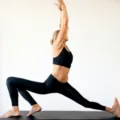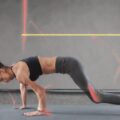Are you looking to strengthen your core, improve your posture, and work your entire body? The plank challenge is a perfect way to kickstart your fitness journey with just one simple exercise. This versatile workout targets a multitude of muscles, and with different variations, it can be adapted for all fitness levels. Ready to take on the challenge? Let’s dive into a plank routine that will transform your body and boost your overall fitness.
Understanding the Basics of Plank Exercise
The plank is a bodyweight exercise that involves maintaining a position similar to a push-up for the maximum possible time. It primarily strengthens the core, but also engages the shoulders, chest, back, glutes, and legs. The beauty of the plank is its simplicity and the minimal space required to perform it.
Starting with the Classic Forearm Plank
Before diving into variations, it’s crucial to master the classic forearm plank. Begin by lying face down, then prop yourself up onto your forearms and toes, keeping your body in a straight line from head to heels. Activate your core by pulling your belly button towards your spine, and ensure your hips are neither sagging nor piked up. Aim to hold this position for 20 to 30 seconds, gradually increasing the time as you build endurance.
Incorporating Plank Variations
Once you’re comfortable with the basic plank, spice up your routine with variations. Side planks target obliques, reverse planks focus on the posterior chain, and by adding movements like leg lifts or arm extensions, you can increase the challenge and engage more muscle groups.
30-Day Plank Challenge Plan
Commit to a 30-day plank challenge to see tangible results. Start with the classic plank and each day, increase your time holding the pose. Introduce variations every week to keep the challenge exciting and your muscles guessing. Here’s a simple plan to follow:
- Week 1: Classic forearm plank, 20-30 seconds daily.
- Week 2: Introduce side planks, adding 10 seconds each day to your routine.
- Week 3: Add reverse planks and plank with leg lifts, alternating days.
- Week 4: Combine all variations, aiming for a minute or more for each.
Benefits of Regular Plank Exercise
Planking consistently can lead to improved core strength, better posture, and a more toned physique. Additionally, as a low-impact exercise, it’s accessible for those with joint concerns and can complement other fitness routines.
FAQs About the Plank Challenge
How often should I do the plank challenge?
For the 30-day challenge, perform the plank exercise daily. After the challenge, maintain a routine of 3-4 times per week.
What if I can’t hold the plank for the suggested time?
Start with what you can manage and gradually increase your time. Consistency is key to improvement.
Are there any risks associated with planking?
When performed with proper form, planking is generally safe. However, if you have pre-existing conditions, consult with a healthcare professional first.
Can planking help with weight loss?
While planking primarily builds strength and endurance, combined with a healthy diet and regular cardio, it can contribute to weight loss.
Should I warm up before planking?
Yes, a light warm-up that includes dynamic stretches can help prevent injury and improve performance.









